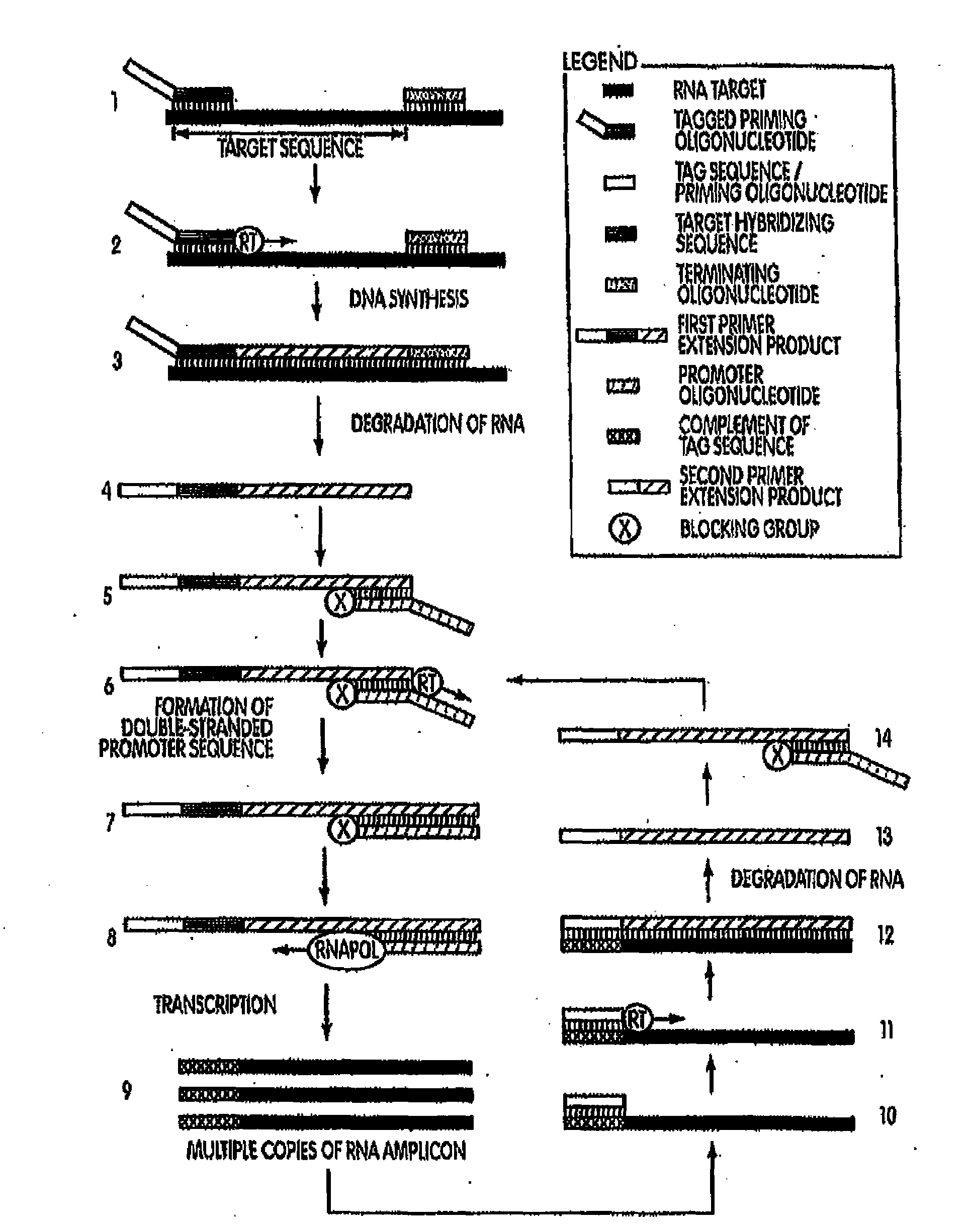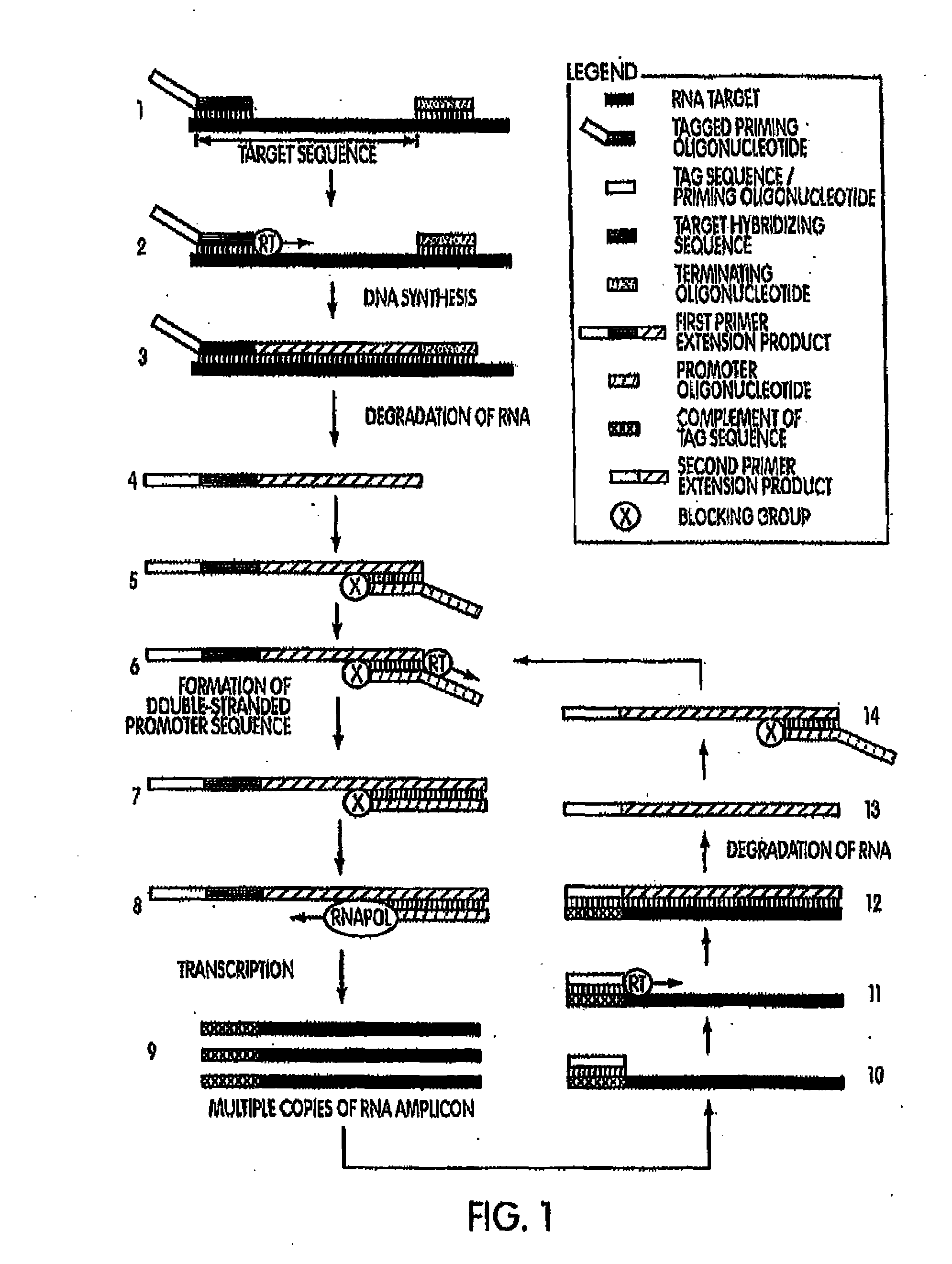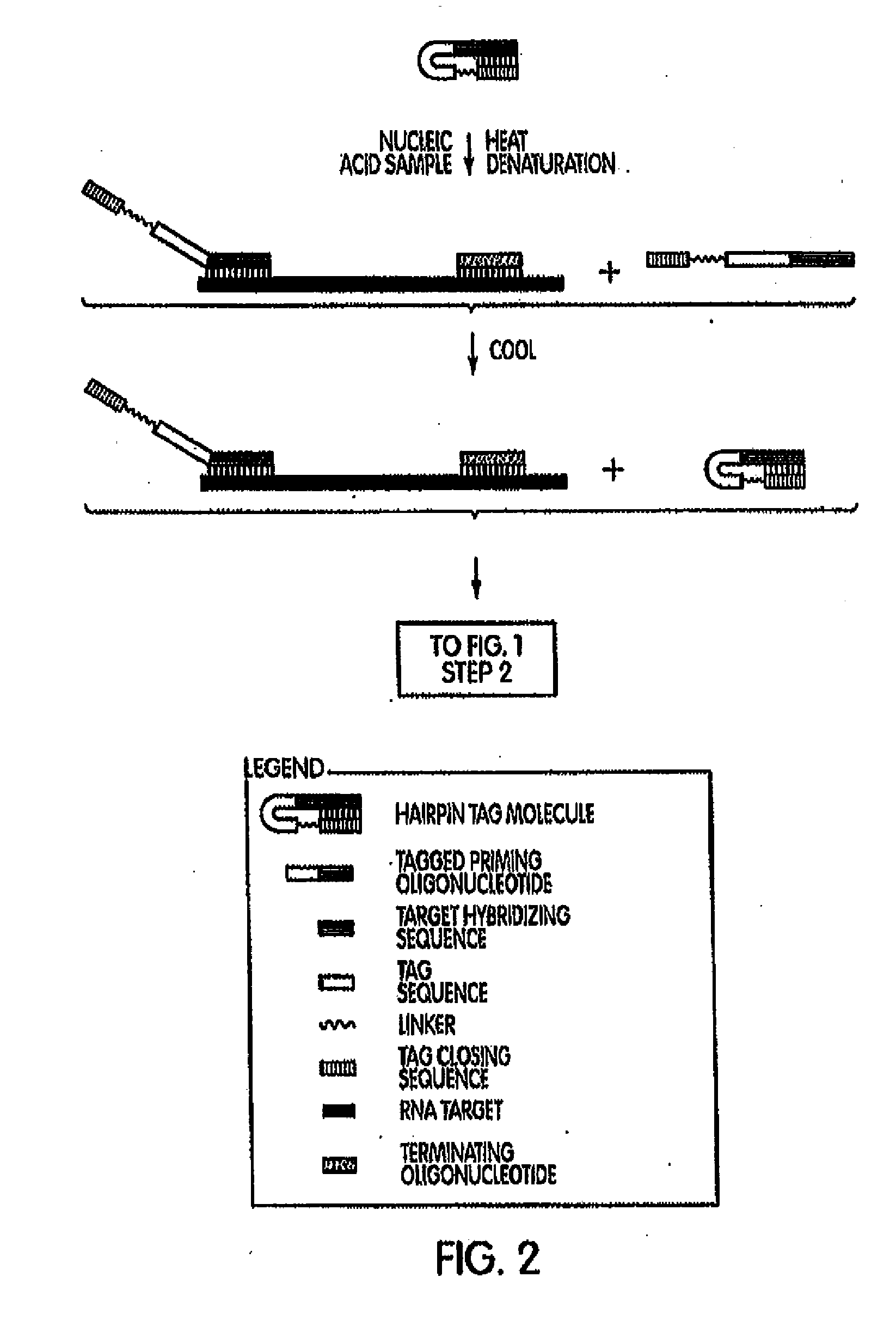Inactivatable target capture oligomers for use in the selective hybridization and capture of target nucleic acid sequences
a target capture and nucleic acid sequence technology, applied in the field of inactivable target capture oligomers for use in the selective hybridization and capture of target nucleic acid sequences, can solve the problems of false positive, limited acceptance of first-generation amplification assays, and limited acceptance of certain settings
- Summary
- Abstract
- Description
- Claims
- Application Information
AI Technical Summary
Benefits of technology
Problems solved by technology
Method used
Image
Examples
example 1
Selective Hybridization and Capture of Target Nucleic Acids
[0205]In a first example, target capture was performed using a linear target capture oligomer and an inactivatable target capture oligomer. The oligomers are presented in Table 1, below. The target nucleic acid was a P. acnes 16S ribosomal nucleic acid. The sequence of this target nucleic acid is found at GenBank Accession No.: AB042288.1 gi:7707831, first seen at NCBI on May 5, 2000, with non-sequence updates on Jul. 22, 2002, Jan. 14, 2004 and Aug. 9, 2006, and is also SEQ ID NO:38 in the Sequence Listing. To determine the efficiency of these target capture oligomers, captured nucleic acids were assayed in a subsequent real-time reverse TMA reaction (See, e.g., U.S. Pat. Nos. 5,480,784 and 5,399,491.). Briefly, a series of preannealing mixtures was made at 150.micro.L volume and comprising 0.5M LiCl lysis buffer, one of the linear target capture oligomer or the inactivatable target capture oligomer SEQ ID NOS:32 or 26, res...
example 2
Selective Hybridization and Capture of Target Nucleic Acids and Amplification with Heterologous Amplification Oligomers
[0208]A second set of experiments was conducted to compare the use of an inactivatable target capture oligomer to the use of a linear target capture oligomer; each along with a downstream amplification assay that uses a heterologous amplification oligomer. Amplification assays using heterologous amplification oligomers are described herein and are also known in the art (e.g., Becker et al., U.S. Pub. No. 2007-0281317 A1). Preannealing reactions were set up generally as described above for example 1. Oligomers used in the preannealing mixture were one of the linear target capture oligomer or the inactivatable target capture oligomer SEQ ID NOS:32 or 26, respectively, (6 pM / rxn each); a heterologous amplification oligomer SEQ ID NO:36 (2 pm / rxn); and a terminating oligomer SEQ ID NO:37 (2 pM / rxn). Following a short initial incubation, 1×10.sup.4 copies of SEQ ID NO:38...
example 3
Inactivatable Target Capture Oligomers Comprising Tag-Closing Regions of Varying Length
[0212]A series of amplification and detection reactions were set-up using either a linear target capture oligomer or an inactivatable target capture oligomer. The target organism was P. acnes and the target nucleic acid sequence was the 16S rRNA gene of P. acnes, SEQ ID NO:38. In a first set of experiments, inactivatable target capture oligomers were designed to comprise tag-closing regions that are complementary to a target hybridizing portion of the capture probe. The tag-closing regions were designed to vary from 6 contiguous nucleobases in length to 14 contiguous nucleobases in length. The inactivatable target capture oligomers also comprised a target hybridization region and a dT3A30 nucleic acid sequence binding pair member. In this first experiment, these various inactivatable target capture oligomers were compared against each other and against a linear target capture oligomer for their hy...
PUM
| Property | Measurement | Unit |
|---|---|---|
| temperature | aaaaa | aaaaa |
| temperature | aaaaa | aaaaa |
| melting temperature | aaaaa | aaaaa |
Abstract
Description
Claims
Application Information
 Login to View More
Login to View More - R&D
- Intellectual Property
- Life Sciences
- Materials
- Tech Scout
- Unparalleled Data Quality
- Higher Quality Content
- 60% Fewer Hallucinations
Browse by: Latest US Patents, China's latest patents, Technical Efficacy Thesaurus, Application Domain, Technology Topic, Popular Technical Reports.
© 2025 PatSnap. All rights reserved.Legal|Privacy policy|Modern Slavery Act Transparency Statement|Sitemap|About US| Contact US: help@patsnap.com



